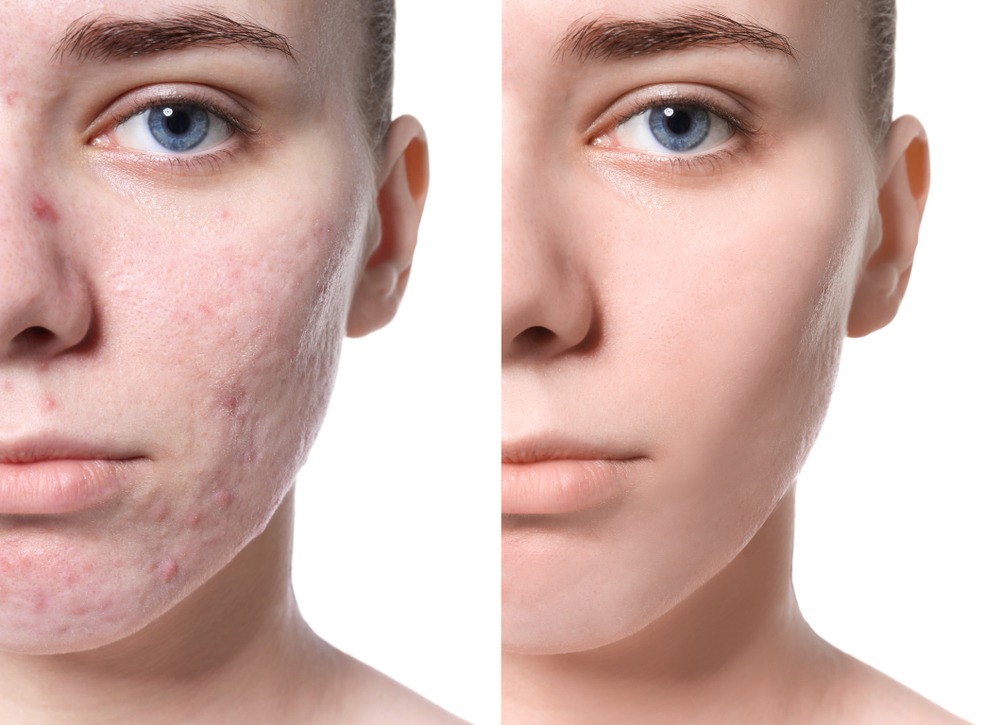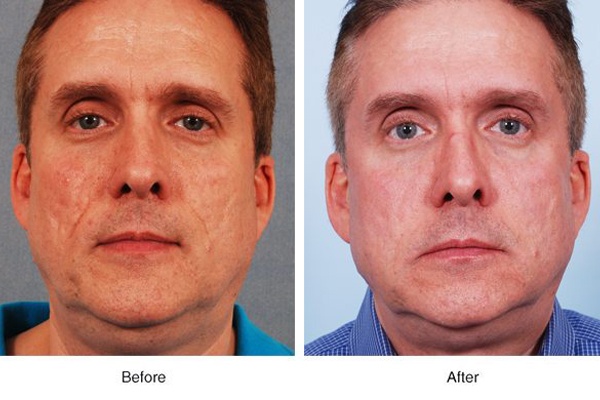Leading Acne Treatment for Sensitive Skin: Gentle Solutions for Clear Skin
Leading Acne Treatment for Sensitive Skin: Gentle Solutions for Clear Skin
Blog Article
Recognizing the Numerous Skin Conditions and Effective Therapy Alternatives for Acne Scars
Acne scars stand for an intricate interplay of skin conditions that considerably effect individuals' self-confidence and total skin wellness. As we discover the landscape of acne scar management, it ends up being obvious that the trip toward more clear skin may entail even more than simply topical remedies.
Kinds Of Acne Scars

In contrast, hypertrophic marks result from an overproduction of collagen during the healing procedure, leading to elevated areas on the skin. These scars are usually firm and can differ in shade, sometimes appearing red or darker than the surrounding skin.
Understanding these sorts of acne scars is vital for creating an efficient therapy plan - acne scars. Options might include chemical peels, laser therapy, microneedling, or facial fillers, tailored to the certain mark type. A detailed assessment with a skin doctor can assist establish the most proper intervention, thinking about the individual's skin type, mark severity, and total skin wellness
Causes of Acne Scarring
Scarring occurs as an outcome of the body's natural recovery feedback to swelling and injury caused by acne sores. When acne kinds, it triggers an inflammatory reaction, causing the release of numerous cytokines and development aspects that promote recovery. However, this procedure can often lead to extreme cells formation or insufficient repair service, causing marks.
The key sources of acne scarring consist of the severity of the acne itself, period of the lesions, and individual skin types. Severe inflammatory acne, such as blemishes and cysts, is most likely to lead to scarring due to deeper cells damage. Additionally, improper handling of acne sores, such as pressing or selecting, can exacerbate tissue injury and swelling, enhancing the possibility of scarring.
Hereditary proneness likewise plays a considerable duty; people with a family members history of scarring are at a greater threat. Moreover, skin kind and shade can influence scar formation, as darker complexion might experience post-inflammatory hyperpigmentation, while lighter skin might develop atrophic marks.
Ultimately, understanding these reasons is important in managing acne and reducing the potential for scarring.

Therapy Alternatives for Scarring
Effective therapy choices for acne scarring vary depending on the kind and severity of the scars. Usually categorized into atrophic, hypertrophic, and keloid marks, these problems call for tailored strategies for optimum results.
For atrophic scars, which are defined by a loss of tissue, treatments such as chemical peels, microdermabrasion, and laser treatment are commonly employed. These techniques promote skin revival and promote collagen production, thereby boosting skin texture. Subcision, a minimally invasive procedure, can likewise be efficient by damaging up fibrous bands under the skin.
Keloid and hypertrophic scars can be a lot more testing to treat. Choices consist of corticosteroid injections to decrease inflammation and squash the scars. In many cases, cryotherapy or laser therapy may be recommended to lessen their appearance.
Surgical alternatives are available for extreme scarring, where excision or skin grafting may be required. It's crucial for people to talk to a skin doctor to assess their certain scar kind and discuss one of the most ideal treatment strategy. Incorporating numerous treatments typically generates the most effective outcomes, guaranteeing that each patient's special skin disease is resolved efficiently.
Natural Remedy and All-natural Solutions
All-natural remedies and natural home remedy can give an easily accessible technique for individuals looking for to boost the look of acne marks (acne treatment for sensitive skin). Numerous components discovered in the home kitchen area have actually demonstrated potential advantages in improving skin structure and promoting recovery

An additional effective alternative is lemon acne scars juice, which acts as an all-natural exfoliant and can lighten hyperpigmentation. However, it ought to be made use of carefully, as it may trigger photosensitivity. Oat meal masks are also advantageous; their gentle exfoliation can help eliminate dead skin cells while soothing irritation.
Important oils, such as tea tree oil and lavender oil, can further support mark recovery as a result of their antimicrobial properties. It is essential to do a patch test before using any type of treatment to make sure there are no negative responses. These all-natural options can be a corresponding approach in the trip to decrease acne scars.
Protecting Against Future Scarring
Adopting a positive approach to skin care can dramatically decrease the threat of creating future acne scars. Among the vital approaches is to take care of acne successfully as it emerges. This involves utilizing non-comedogenic skincare products and drugs recommended by skin doctors that target acne without irritating the skin. Regular cleaning, exfoliation, and hydration can aid preserve skin wellness and avoid clogged pores.
Furthermore, preventing the lure to pick or press acne sores is crucial, as this can lead to inflammation and subsequent scarring. Rather, people should concentrate on using topical treatments that advertise healing and lower inflammation. Ingredients such as salicylic acid, benzoyl peroxide, and retinoids are understood for their effectiveness in handling acne and reducing scars.
Sunlight security is an additional vital part; direct exposure to UV rays can darken scars and impede healing. Consequently, using a broad-spectrum sun block daily can alleviate these impacts - acne and acne scars treatment.
Last but not least, maintaining a healthy diet rich in anti-oxidants and staying hydrated assistances skin regrowth. By applying these precautionary steps, individuals can significantly reduce their risk of future scarring and advertise general skin wellness.
Conclusion
In verdict, a thorough understanding of acne scars, incorporating both atrophic and hypertrophic types, is vital for efficient therapy methods. Examination with a skin specialist continues to be critical to devise personalized approaches that consider specific skin kinds and scar severity, eventually improving the efficiency of mark administration methods.
Acne marks represent a complicated interplay of skin problems that substantially impact people' self-confidence and total skin health and wellness. The two main groups of acne scars are atrophic and hypertrophic scars. These marks are additional identified into 3 subtypes: ice pick scars, which are deep and narrow; boxcar marks, which are larger and have distinct sides; and rolling scars, which produce a wave-like look due to irregular skin texture.
An extensive assessment with a skin specialist can assist figure out the most suitable intervention, taking right into account the individual's skin kind, scar extent, and total skin wellness.
Appointment with a dermatologist remains essential to develop personalized techniques that take into consideration individual skin kinds and mark severity, eventually boosting the efficiency of mark monitoring strategies.
Report this page